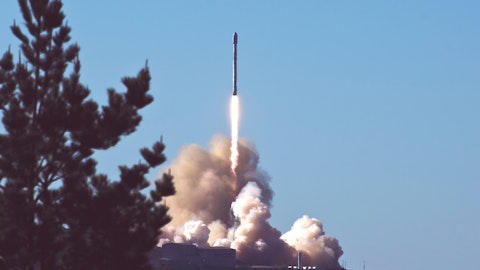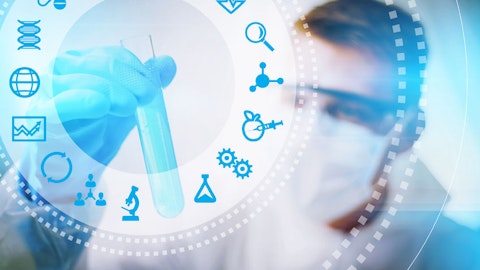Joseph Payne: Absolutely. Peter, that’s a really good question, and thanks for being on the call. We anticipate that our callous will become a full-fledged mRNA facility with not only the capability of drug substance and drug product but certainly going to be a world-class facility for any type of mRNA capability going forward. So it’s up to our callous to announce all the specifics with respect to their capability and I’ll leave it up to them, but they do have an exciting future, and we’re a part of it and certainly we’ll have more details with our partner as soon as it becomes available.
Pete Stavropoulos: All right, thanks. And now for 032, I know that you have fully enrolled the Phase 1 in terms of healthy volunteers. And I know the focus is safety and tolerability. But now that you’re expanding the patient population, what are some of the ways that you may evaluate the pharmacodynamic response?
Joseph Payne: Yes. There is — we’re going to be looking primarily at safety and tolerability in patients. I know we’re very pleased with the results so far that we’ve seen in Phase 1 in healthy volunteers. This was the first time anyone has inhaled lunar technology and so now that we transitioned to patients in Phase 1b, that is the primary objective here because we have a stellar preclinical dataset of really positive data, so we just want to first see safety and tolerability in this Phase 1b set of patients. Having said that, we are positioning ourselves to evaluate LCI or Lung Clearance Index, and this is a sensitive measure of lung function, so we will look to see if after two doses if we can see something, but the primary objective here is just to establish safety and tolerability in patients.
Pete Stavropoulos: All right. And thank you for that. And the last question is, I know you gave a brief sort of update on enrollment and to look other programs. But have you activated all the sites, and if not, how many more can you potentially activate to help enrollment move along?
Joseph Payne: We are essentially at capacity with respect to activating sites. Our team has been traveling through Europe and following up with all the principal investigators in this manner. So we’re working hard to enroll patients and that’s the guidance we’ve provided and that we remain consistent on providing some data later this year or in the coming months.
Pete Stavropoulos: All right. Thank you very much for taking my questions and congrats on the progress once again.
Joseph Payne: Yes. Thanks, Pete.
Operator: Next question comes from Yanan Zhu with Wells Fargo. Please go ahead.
Yanan Zhu: Hi, thanks for taking my questions, and congrats on the progress. I wanted to get maybe a little more clarity on what might happen after a potential Japan approval. So I think Daiichi’s decision at least looking at the news release is by itself and it doesn’t look like the PMDA instructed it not to supply the market this original strain vaccine. So I was wondering what is your and your partners thinking. Once you receive the approval, what’s the thinking process in terms of whether to supply the market and if you do supply the market, I was wondering who is the manufacturer, is that your facility or the Arcalis facility?
Andy Sassine: Well, with respect to commercial guidance — with respect to the second, obviously. Thanks for the question, Yanan, but certainly our current manufacturing partners which represents Catalent and Aldevron in the U.S. and Recipharm in Europe would be the suppliers of any current supply. As you know, we’ve articulated the Japan facility won’t come online until next year. So any kind of orders for Japan from that facility, probably will not be until next year late or the year after, so hopefully you can appreciate that we have a dual process in place to be able to provide the Japanese market with our vaccine as soon as possible. And certainly, once the factory is up and running in Japan they’ll be able to supply going forward. Hopefully, that helps clarify that situation and Joe can address the first part of the question.




